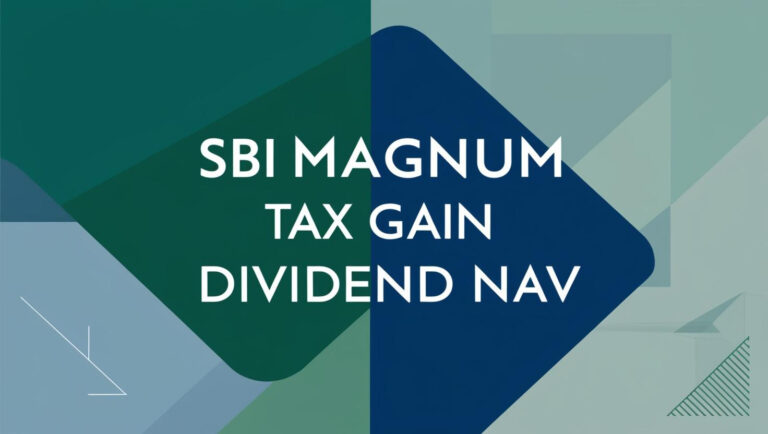How to Start SIP in Zerodha: Step by Step Guide
Introduction
Systematic Investment Plans (SIPs) have revolutionized investing for beginners, offering a disciplined approach to building wealth through mutual funds. With SIPs, you can start small (as low as ₹500/month), benefit from rupee cost averaging, and avoid the stress of timing the market.
Zerodha is a trusted investment platform in India. It makes investing easier with its Coin app. This app helps people start SIPs, even if they are new to the stock market.
In this guide, you’ll learn:
- How to open a Zerodha account and use the Coin app.
- A detailed step-by-step process to create a SIP investment in Zerodha.
- Tips to maximize returns and stay on track with financial goals.
Let’s dive into why SIPs matter and how Zerodha makes investing effortless.
1. What is a SIP and Why Should You Start One?
A SIP lets you invest fixed amounts in mutual funds at regular intervals (monthly, quarterly, etc.). Here’s why it’s perfect for beginners:
- Rupee Cost Averaging: Buy more units when prices dip and fewer when they rise, averaging out market volatility.
- Flexibility: Adjust instalments, pause, or stop SIPs anytime.
- Discipline: Automate savings to build long-term wealth without active effort.
Zerodha’s SIP calculator helps estimate returns, while their curated fund suggestions simplify decision-making.
2. Getting Started with Zerodha for SIP Investments
Step 1: Open a Zerodha Account
- Visit Zerodha’s website and click “Sign Up.”
- Submit PAN, Aadhaar, and bank details. The process takes <10 minutes.
- Once verified, you’ll receive your login credentials.
Step 2: Access the Zerodha Coin App
- Download Coin by Zerodha (available on Android/iOS).
- Log in using your Zerodha credentials.
- Explore the dashboard to view mutual funds, track investments, and manage SIPs.
3. How to Create a SIP in Zerodha (Step-by-Step)
Step 1: Select a Mutual Fund
- Open the Coin app → “Explore Funds.”
- Filter funds by category (equity, debt, hybrid) or use Zerodha’s curated lists.
- Research past performance, risk level, and fund manager reputation.
Pro Tip: Beginners can start with index funds like UTI Nifty 50 for stable returns.
Step 2: Enter the Instalment Amount
- Click “Start SIP” on your chosen fund.
- Enter the amount (minimum ₹500).
- Use the Zerodha SIP calculator to estimate growth over 5–10 years.
Step 3: Set the Execution Date
- Choose a date (e.g., 5th of every month) aligned with your salary cycle.
- Payments will auto-debit from your linked bank account.
Step 4: Create the SIP
- Review details and click “Create SIP.”
- You’ll receive a confirmation email.
Step 5: Complete the Payment
- The first instalment must be paid manually. Navigate to “Pending Payments” and authorize the transaction.
- Future payments will auto-debit on your chosen date.
Step 6: Track and Modify SIPs
- Monitor performance under “My Investments” in the Coin app.
- Adjust SIP amounts, dates, or pause/resume anytime.
4. Benefits of SIPs on Zerodha Coin
- Zero Commissions: Direct mutual funds mean lower fees.
- Transparency: Real-time tracking of NAV and returns.
- Flexibility: Modify SIPs instantly without paperwork.
5. How SIPs Help Achieve Financial Goals
Imagine investing ₹5,000/month in an equity SIP via Zerodha. With an average 12% annual return:
- In 10 years: ₹11.5 lakhs invested → ₹11.9 lakhs returns.
- In 20 years: ₹24 lakhs invested → ₹1.02 crore returns.
Automate SIPs to fund education, retirement, or a dream home without market stress.
Learn more about Mutual Funds in our How to Invest in Mutual Funds: A Step-by-Step Guide.
Conclusion
Starting a Systematic Investment Plan (SIP) in Zerodha is more than just investing. It is about taking a disciplined and easy approach to building wealth. For beginners, SIPs eliminate the intimidation of lump-sum investments and market timing, allowing you to grow your money steadily through small, regular contributions. By automating your savings, you’re prioritizing your future self, whether you’re saving for a dream home, your child’s education, or a comfortable retirement.







